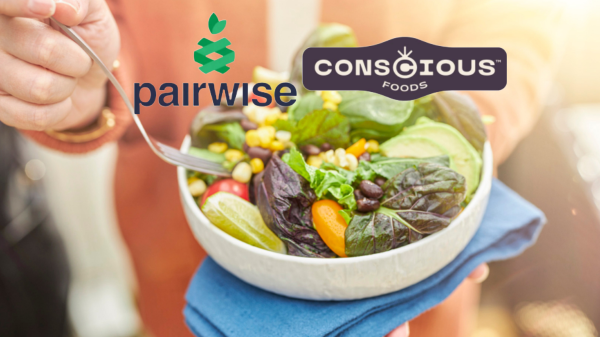In May, Pairwise introduced the first food to the market using CRISPR technology, with its Conscious Greens Purple Power Baby Greens Blend.
A July 5 International Fresh Produce Association BB #:378962 town hall webinar explored the technology’s future in food and in fresh produce.
CRISPR is a gene editing technique used to make changes to the DNA of a plant, bush, or tree, to bring out desired characteristics or to dial down undesired characteristics.
In the case of fresh produce, advocates say the technology can do a number of positive things from improving taste and nutrition, to eliminating browning, to reducing or eliminating the need for pesticides, to changing a plant’s shape to make it easier to mechanically harvest.
“CRISPR is the next generation of plant breeding,” said Haven Baker, Pairwise co-founder and chief business officer.
He said Pairwise’s mission is to lower barriers to produce consumption, which includes keeping them affordable for consumers.
“Consumers have to see clear benefits [such as] better nutrition, better flavor, longer shelf life,” he said.
Some technology in food has stumbled in the past to get consumer acceptance, such as genetically modified organisms (GMOs), and panelists said much of that was due to poor messaging.
“Consumers say historically, no one talked about food technology, so they thought there was something to hide,” said Laurie Demeritt owner and CEO of The Hartman Group.
“Consumers want to know why [CRISPR foods have benefits], and we have to get the language right in talking about this new technology.”
The good news, she said, is that consumer sentiment is changing rapidly when it comes to technology in food. She said polling shows consumers are worried about many things getting worse in terms of access to food and the effect of agriculture on the climate.
“The majority of Americans are more open to science as a solution than in the past,” Demeritt said. “They want transparency of issues and benefits. Gen Z and millennials are even more open to scientific solutions. It’s a dramatic difference with the older generations.”
Vonnie Estes vice president of AgFood Tech Innovation at IFPA, said retailers can be a good partner in promoting CRISPR foods, but they can’t be expected to do all the education of the technology.
Retailers want to be able to have new products for consumers, and they know consumers take only about 3 seconds to decide if they will buy a fresh produce item.
“[Retailers] are excited about CRISPR options,” she said. “They also want transparency and to communicate to customers. Retailers can’t tell the story for us. [Producers] have to do it, and we have to lead with customer benefits.”
Neil Merritt, vice president of sales at Pairwise, said the company puts information about CRISPR on bagged product and links to web addresses for further information.
Baker said the greatest advances have come so far in health and medical fields, and it’s just starting in agriculture.
“We’ll see a whole slew of products by the end of the decade,” he said.
He also said CRISPR food products have gained regulatory approvals in the U.S., and they’re gaining them also in Canada, the United Kingdom and hopefully soon in the European Union.
Demeritt said health and wellness is not a fad or a niche, consumer studies show.
“It’s pervasive, and eating more fruits and vegetables is a big focus,” she said. “This technology can help them get more produce in their diets.”



